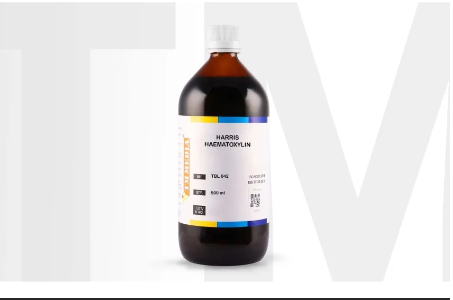Nuclear Staining:
Harris hematoxylin is primarily used to stain cell nuclei, making them appear blue or dark purple. It also stains other tissue components like keratohyalin granules and calcified material.
H&E Staining:
It is a crucial component of the H&E staining process, where it is paired with eosin, a counterstain that colors the cytoplasm and other tissue elements pink.
Regressive Staining:
Harris hematoxylin is commonly used in regressive staining, a method where tissues are overstained and then destained with an acid alcohol solution to remove excess stain.
Progressive Staining:
It can also be used in progressive staining, particularly in cytology, where the tissue is stained until the desired intensity is achieved.
Components:
Harris hematoxylin typically contains hematoxylin, a mordant (often alum), and a solvent like alcohol or ethylene glycol.
Applications:
It is used in various histological and cytological applications, including the study of tissue architecture, cell morphology, and disease diagnosis.
Safety:
Some formulations of Harris hematoxylin may contain mercury oxide, which is toxic, but many modern formulations are mercury-free.





